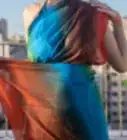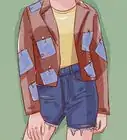This article was co-authored by wikiHow Staff. Our trained team of editors and researchers validate articles for accuracy and comprehensiveness. wikiHow's Content Management Team carefully monitors the work from our editorial staff to ensure that each article is backed by trusted research and meets our high quality standards.
The wikiHow Video Team also followed the article's instructions and verified that they work.
This article has been viewed 33,397 times.
Learn more...
Onesies are a convenient clothing item for babies. They keep the baby warm while making diaper changes quick and easy. They can get expensive, however, especially for a growing or messy baby! Luckily, it is easy to make cute baby onesies at home.
Steps
Creating the Pattern
-
1Wash and dry your desired jersey fabric. This is the same material that T-shirts are made out of. You can buy jersey fabric from a fabric store, or you can cut up a T-shirt instead. Wash the fabric in cool water on a delicate setting, then dry it in the dryer. If the fabric comes out wrinkled, iron it using the cotton setting on your iron.
-
2Fold your fabric in half and place a baby onesie on top. The standard legless onesie with a snapped crotch will be the easiest to work with, but you can use a long-legged onesie instead. You will simply need to make extra ribbing for the leg cuffs and inseam.[1]
- Save yourself some work, and fold the fabric with the right sides facing in.
- If you don't have a onesie, find some pants and a shirt that fit your baby. Place them on the fabric, with the waistband and shirt hem touching.[2]
Advertisement -
3Tuck the sleeves in and trace 1 inch (2.5 cm) around the onesie. Tuck the sleeves into the onesie or fold them over so that you can see the armholes. Trace around the onesie, adding a 1-inch (2.5-cm) seam allowance.[3]
-
4Cut the pattern out, then cut the neckline deeper for the front piece. Once you cut the pieces out, pick 1 piece to be the front and fold it in half lengthwise. Begin cutting 1⁄2 inch (1.3 cm) below the collar, and finish cutting at the corner of the collar.
- You are cutting out a crescent shape. This way, you won't be widening the collar. If you widen the collar, it won't match up with the back piece.
-
5Refine the bottom for a legless onesie, if needed. Take the onesie and pull the back crotch flap out of the way so that just the front flap is visible. Set the onesie on top of the front piece you just cut out. Trace around the bottom edge of the onesie, adding a 1-inch (2.5-cm) seam allowance. Be sure to include the leg holes. Trim off the excess fabric, following the lines that you drew.[4]
- Skip this step if you are making a long-legged onesie.
-
6Trace a sleeve onto the fabric with a 1-inch (2.5-cm) seam allowance. Fold your fabric in half. Place the sleeve of the onesie onto the fabric, with the folded top edge of the sleeve 1 inch (2.5 cm) away from the folded edge of the fabric. Trace around the sleeve using a 1-inch (2.5-cm) seam allowance.
-
7Cut the sleeve out, then use it to trace and cut the second sleeve. Cut the sleeve through both layers of fabric along the cuff, bottom edge, and sleeve hole; do not cut the sleeve along the folded edge. Once you have the first sleeve cut out, place it onto another part of the folded fabric. Trace and cut a second sleeve out.
Cutting the Ribbing
-
1Measure the hems for the collar, sleeves, and legs. You will need 2 separate measurements for the collar: 1 for the front piece and 1 for the back. Measure across 1 of the sleeves cuffs; you'll use this measurement to cut 2 pieces.[5]
- If you are making a legless onesie, measure the entire front crotch flap, including the leg holes. Do the same for the back piece.
- If you are making a long-legged onesie, you only need measure 1 leg cuff and cut 4 pieces of ribbing for the leg cuff. You'll be hemming the inseam instead.
-
2Cut 2-inch (5.1-cm) long strips for the ribbing. You can use jersey fabric for this, but actual ribbing would be even better. The color can be the same as the onesie, or it can be a contrasting color. More importantly, cut the strips across the grain of the fabric, otherwise it will not stretch.[6]
- You will need 1 piece for each measurement that you took.
-
3Fold the strips in half lengthwise and press them with an iron. You will not be turning these strips, so make sure that you are folding them with the right sides facing out. Fold the strips in half lengthwise first, then secure them with pins. Press them flat with an iron, then remove the pins.[7]
-
4Fold the edges inside the strips and press them again. Open up the strips, and fold the long edges towards the center crease. Fold the strips in half again and press them flat with an iron; use sewing pins to keep them shut, if needed. Be sure to remove the pins when you are done.[8]
- This step is similar to folding bias tape.
-
5Open the strips and sew them to the respective hems. Unfold each strip, and pin it to its respecting sleeve or collar. Make sure that the right sides of the strips are touching the right sides of the onesie fabric. Sew the strips in place using a 1/4-inch (0.64-cm) seam allowance.[9]
- Use a thread color that matches the fabric. Backstitch when you start and finish sewing.
- Do not fold the strips down or top stitch them yet. You'll do this last.
Assembling the Onesie
-
1Sew the shoulders of the onesie together, including the collar ribbing. Place the front and back onesie pieces together so that the right sides are facing in, including the ribbing. Start sewing at the outside edge of each shoulder, and finish sewing at the top edge of each ribbing piece. Use a zigzag stitch and a 1 inch (2.5 cm) seam allowance.[10]
- Use a thread color that matches the onesie fabric. Backstitch when you start and finish sewing.
- Use sewing pins to hold the fabric together if you have to, but remember to take them out when you are done.
- You are sewing across the seam created by the collar and ribbing. Fold this seam towards the ribbing as you sew.
-
2Sew the sleeves to the onesie. Pin the shoulder of the sleeves to the shoulders of the onesie. Make sure that the right sides are touching, then sew the seams using a zigzag stitch and a 1-inch (2.5-cm) seam allowance. Remove the pins when you are done.[11]
- Cut V-shaped notches into the curved edges of the armholes when you are done. Be careful not to cut through the stitching.
-
3Sew the onesie down the sides, including the ribbing. Fold both sides of the onesie together, so that the right sides are touching. Sew along the left and right sides of the onesie, starting at the leg ribbing and finishing at the sleeve ribbing. Use a zigzag stitch and a 1 inch (2.5 cm) seam allowance, like before.[12]
- Use sewing pins to hold the onesie together if you need to, but remember to take them out.
- Once again, fold the seam created by the ribbing and the sleeves/legs towards the ribbing.
-
4Hem the inseam if you are making a long-legged onesie. Working from the wrong side of the fabric, fold the inseam down by 1⁄2 inch (1.3 cm). Press it flat with an iron, then fold it down by another 1⁄2 inch (1.3 cm). Press it flat with an iron once more, then topstitch it down using a zigzag stitch and a thread color that matches the fabric.
-
5Fold and topstitch the ribbing down. Using the original creases as a guide, fold each ribbing down twice to create a clean, inside edge. Topstitch the ribbing down using a zigzag stitch. Sew as close to the inside edge of the ribbing as possible.[13]
- If your ribbing is a different color from the rest of the fabric, match the thread color to the ribbing.
-
6Add the snaps to the crotch flap or inseam. Use a dressmaker's pen to mark the spaces for the snaps along both hems on the inseam. Insert the snaps using a snap setter. You will need 3 to 4 snaps for a leg-less onesie, and more for a long-legged onesie.[14]
- How many snaps you use on a long-legged onesie depends on how long the legs are. Space them every 2 inches (5.1 cm) or so.
-
7Add snaps tape to the inseam if you want to save time. Purchase a snap tape in a color that coordinates with your onesie. Cut the tape to the length of the curved inseam, from cuff-to-cuff. Pull the snap tape apart, and sew it to the wrong side of each inseam.[15]
- A snap tape is a strip of twill ribbon with snaps already attached.
-
8Trim off any loose threads, then turn the onesie right-side-out. Go over your onesie and snip off any loose or hanging threads. Once you are done, turn the onesie right-side-out.
Things You'll Need
- Baby onesie
- Dressmaker's chalk or pen
- Fabric scissors
- Jersey fabric
- Thread
- Sewing pins
- Sewing machine
- Snaps or snap tape
References
- ↑ http://www.hallmarkchannel.com/home-and-family/how-to/diy-baby-t-shirt-onesies
- ↑ https://www.youtube.com/watch?v=KgIdLlk9C4o&feature=youtu.be&t=36s
- ↑ http://www.hallmarkchannel.com/home-and-family/how-to/diy-baby-t-shirt-onesies
- ↑ http://www.hallmarkchannel.com/home-and-family/how-to/diy-baby-t-shirt-onesies
- ↑ https://shwinandshwin.com/2013/07/baby-ringer-onesie-free-pdf-pattern.html
- ↑ https://shwinandshwin.com/2013/07/baby-ringer-onesie-free-pdf-pattern.html
- ↑ https://shwinandshwin.com/2013/07/baby-ringer-onesie-free-pdf-pattern.html
- ↑ https://shwinandshwin.com/2013/07/baby-ringer-onesie-free-pdf-pattern.html
- ↑ https://shwinandshwin.com/2013/07/baby-ringer-onesie-free-pdf-pattern.html
- ↑ https://shwinandshwin.com/2013/07/baby-ringer-onesie-free-pdf-pattern.html
- ↑ https://shwinandshwin.com/2013/07/baby-ringer-onesie-free-pdf-pattern.html
- ↑ https://shwinandshwin.com/2013/07/baby-ringer-onesie-free-pdf-pattern.html
- ↑ https://shwinandshwin.com/2013/07/baby-ringer-onesie-free-pdf-pattern.html
- ↑ https://shwinandshwin.com/2013/07/baby-ringer-onesie-free-pdf-pattern.html
- ↑ http://www.hallmarkchannel.com/home-and-family/how-to/diy-baby-t-shirt-onesies
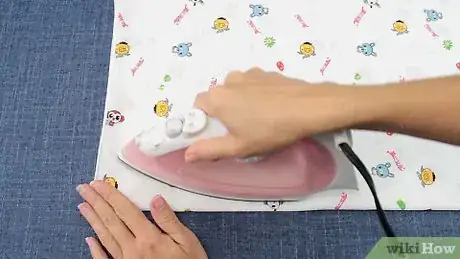
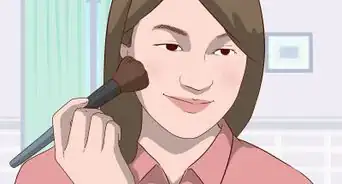

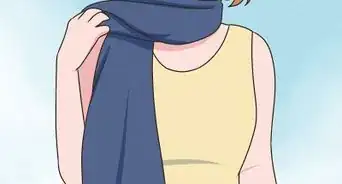



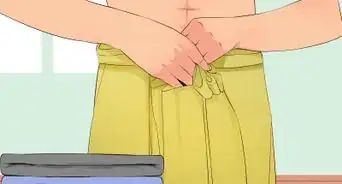
-Step-13.webp)

-Step-5.webp)







